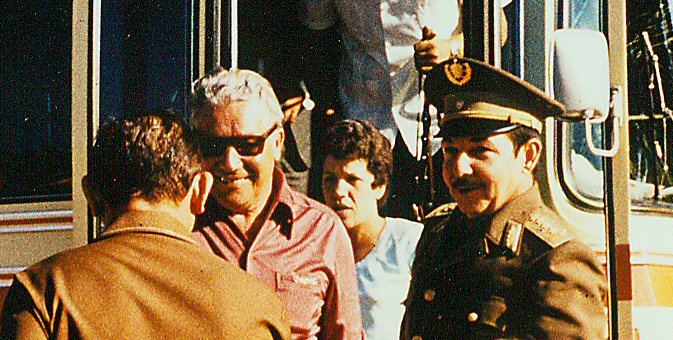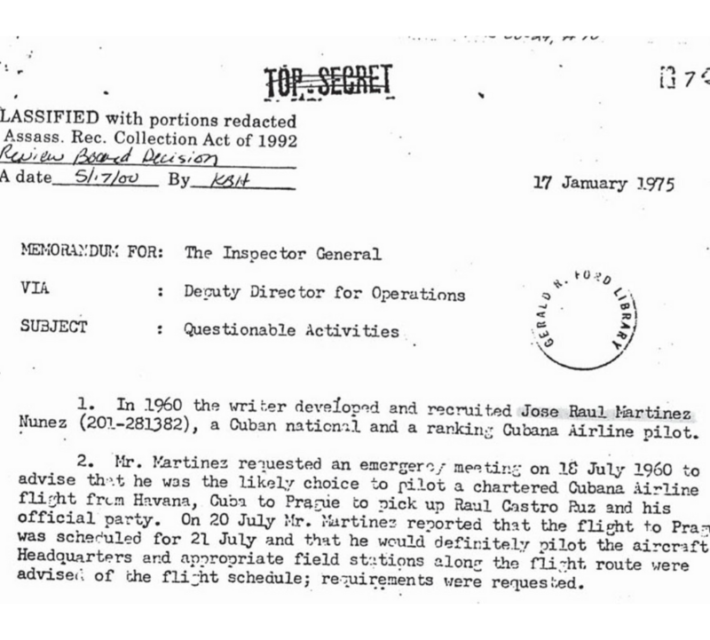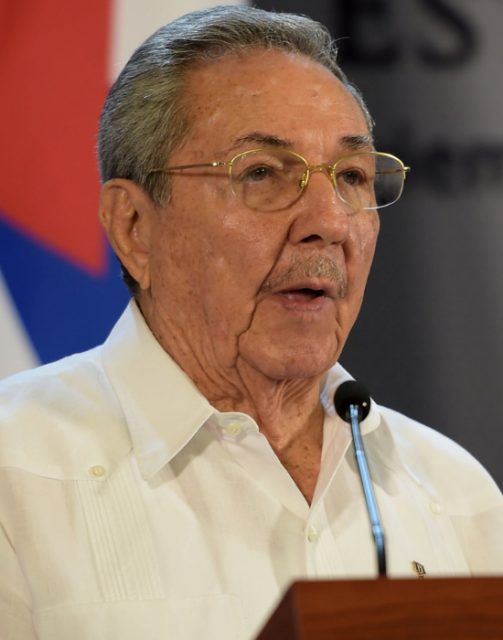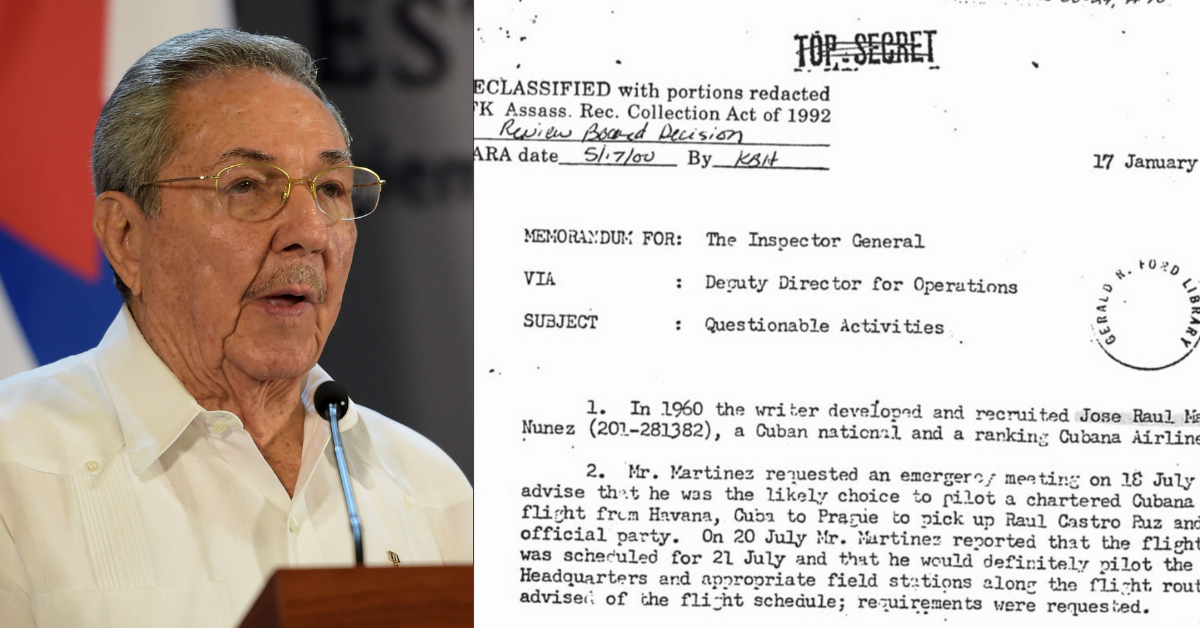With Raúl Castro’s retirement from politics on the 60th anniversary of the Bay of Pigs invasion, CIA documents about a planned assassination plot against the longstanding politician have been declassified.
The Digital National Security Archive at George Washington University has released these documents as the Castro era of Cuba, which has existed since the 1950s, comes to a formal end.
The first years of the Castro Era were a tumultuous time
The era officially began in 1959, when Fidel Castro, Raúl Castro, Che Guevara, and their revolutionaries overthrew U.S.-backed Cuban President Fulgencio Batista. They had tried to do so since 1953, before finally succeeding. Fidel Castro assumed control of the country as its Prime Minister, destroying relations with the U.S. and building them with the USSR in the process.

The revolution occurred on such a small island, but because of Cuba’s contrasting communist politics in such close proximity to the U.S., it had enormous global effects. The USSR pounced on the opportunity to have an ally so close to the U.S. and began placing nuclear weapons on Cuban soil. This resulted in the Cuban Missile Crisis in 1962, almost causing a nuclear war.
With Cuba’s unpredictable communist government in power, the U.S. began plotting ways to eliminate them. The earliest known assassination attempt on Cuban officials is included in the National Security Archives’ latest releases.
The recently declassified documents show Raúl Castro had a close call
The plan involved paying off a pilot who had been chosen to fly an aircraft carrying Raúl Castro and other important Cuban officials to “accidentally” crash the aircraft and hopefully do away with the VIPs. The pilot was a Cuban man named Jose Raul Martinez. Martinez had already been recruited by the CIA to report activity in Cuba.

He informed his CIA handler William J. Murray in Havana, that he was chosen to fly a Cubana Airlines aircraft to Prague, where he would collect Raúl Castro and other high-ranking Cuban leaders on July 21, 1960. After learning this, Murray cabled this information to his CIA superiors, stating that “headquarters cabled back that it was considering the possibility of a fatal accident and asked whether the pilot would be interested.”
In that cable, signed by J.C. King, the head of the CIA’s Western Hemisphere Division, it informed Murray that “possible removal of top three leaders is receiving serious consideration at HQS,” and wanted to know if the pilot had “motivation sufficient to incur risks of arranging accident during return trip.” To sweeten the deal, the CIA offered to pay Martinez $10,000 or “a reasonable demand in excess of that.” On top of this, the CIA would arrange the rescue of the pilot after the crash.
Martinez’ job was not an easy one, as he had to cause an accident severe enough that it would remove Raúl and his men but enable his survival. With a high risk of not making it through the accident, Martinez requested assurance that if the plot resulted in his death, that the U.S. would give his two sons a college education. “This assurance was given,” states Murray.
Murray and Martinez discussed the situation in a car while on the way to the Havana airport. After the pilot reached the airport and Murray returned to the Havana station, he cabled to CIA headquarters “[Subject is] willing to take calculated risk but limited to foll[owing] possibilities which can pass as accidental: A. engine burnout on take off to delay or harass trip. B. Vague possibility water ditching approx. 3 hours out from Cuba.”

He follows with “Subj rules out engine failure in flight due [to] imminent danger [of] fire and lack of opportunity to save any passengers or crew […] Doubts ability perform real accident without endangering lives of all on board.”
More from us: How the USSR got Missiles to Cuba Without Detection
With Hollywood-like timing, CIA headquarters suddenly changed their mind, cabling Murray “Do not pursue. Would like to drop matter.” The problem was, Martinez was already in the air on the way to Prague with no way of receiving the instructions. Luckily, upon Martinez’ return, he informed Murray that he had no opportunity to cause the accident as planned.
The vague details of this plot were discussed in a 1976 Senate Committee after investigating CIA top secret operations. This attempt could be one of many and highlights that there are likely many more of these strange, unique missions still classified by the CIA.
